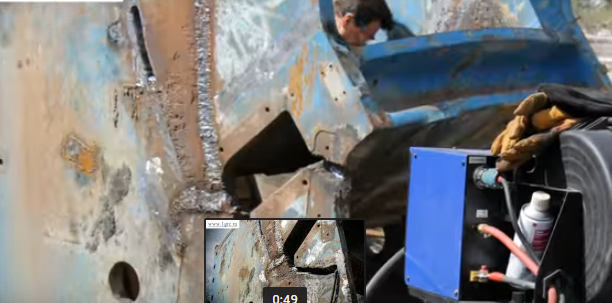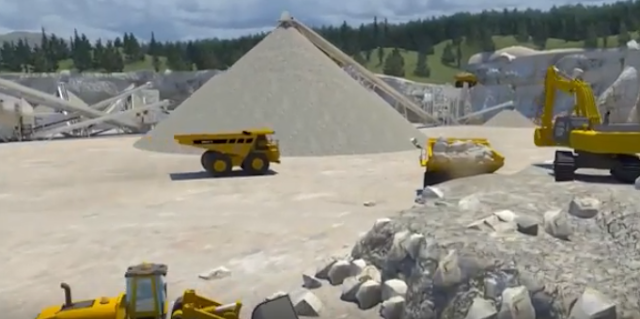1. Preventive and predictive maintenance
2. Guide to the right choice and size of industrial crushers
1. Preventive and predictive maintenance.
 |
| Regular maintenance at intervals increases |
Preventive maintenance is just that; Predefined maintenance plans that occur regardless of the condition of the device. For example, to return to the vehicle, preventive maintenance includes regular fluid checks, safety checks, draining the required oils, and adding new oils. It detects problems before they get worse, and fixes are minor. This usually leads to a reduction in costs and a significant increase in the life of the vehicle. Everything in the industrial world, from pumps to conveyors, crushers and crushers, is the subject of preventive maintenance. This ensures that problems are quickly identified and maintenance can be arranged to replace worn parts before they fail.
Preventive maintenance is not cheap, but it is worthwhile during the life of the device. Downtime is extremely expensive in most applications. By implementing the correct preventive maintenance program, downtime is limited and, as a result, maintenance costs are negligible. Maintenance has changed significantly in the last 10 years. Nowadays, forecasting is the most preferred method of maintenance. Of course some machines are not easy to make and I will explain them below.
As the name suggests, predictive maintenance includes predicting when a machine will fail. Now I do not want to say that you take out a magic wand and make a random assumption: there are many different ways to monitor the status of a machine. These are known as condition monitoring and include vibration analysis, oil analysis, thermal imaging, and ultrasonic measurements. All are non-destructive, fast and very effective.
In many industrial plants, maintenance takes place when you do not need them. For example, pumps can be dismantled as part of a preventive maintenance program. When I found that the pump was in perfect condition, maintenance was a waste of time. What would happen if I could say that the pump is in perfect condition without defusing it? By using the vibration analysis, you can change the vibrations and this indicates the condition of the equipment. As rotating equipment wears, they vibrate more and it is easy to see. You can change the vibration and see its deterioration and plan for maintenance when the device really needs it.
Each of the above types of condition monitoring is self-specialized. If you want to improve maintenance, I'll give you two tips. The first is to make sure you have a quality-controlled Computer-Aided Maintenance Management System (CMMS), and the second is to make sure you're trying to implement preventive maintenance policies. These two suggestions will help you to steer your maintenance in the right direction and increase efficiency, morale and enjoyment in the maintenance departments.
2. Guide to the right choice and size of industrial crushers.
 |
| Crusher with equipment |
A versatile high-quality industrial crusher designed for processing materials such as chemicals, minerals, food, food ingredients, pharmaceuticals and grains, fertilizers, charcoal, soap and more
Tipping crushers are used to reduce the materials to be treated, to remove plugs, to dissolve agglomerates to their original particle size, and to facilitate the unloading of silos and containers. They are also used to improve the flow properties of materials as well as bulk and powder feed. The Pipeline Dumper is used to improve fluid flow, protect pumps, and improve and streamline dissolution and mixing processes.
Trough breakers can reduce hard or soft materials, dry or wet, friable or sticky. The units are designed for applications that require precise performance, superior fit and finish, corrosion or stain resistance, harsh operating conditions, and applications that require high reliability.
The feed material (material introduced into the crusher) may be a solid, a mass, a part or an agglomerate. Franklin Miller mills are available in a variety of models designed for dry, gravity or wet systems. Hackers can be transported online or openly, independently and as part of an overall system. These units can be supplied for low or high temperature environments, as well as for pressure or vacuum systems.
Filled material in silos and silos.
The discharge of bulk materials and powders from a container or silo can often be a major problem, resulting in lost production and high maintenance costs. These flow problems can also cause problems with damming and even failure of containers. The problem arises when the powders are transported as two phases in the container. The material tends to agglomerate or accumulate in the walls of the containers.
The solution
A common solution is the installation of a dump crusher in the dump. This unit attacks and destroys the large solids that cover the landfill. It works almost like a sink that prevents the delivery of large lumps.
Crusher selection
Although crushing is governed by the basic laws of physics, no law or rule replaces the experience and testing of the choice and size of a crusher for a particular application. Choosing a shredder for a particular application depends on several factors, including the following.
Here are some key criteria to consider when choosing a shredder:
- Does the crusher support the maximum capacity required to be handled without excessive load or overload?
- Does the machine accept the total size of the raw material?
- Is the functioning of the device compatible with the properties of the material: brittle, resistant, sticky, abrasive?
- Is the design and construction of the crusher suitable for specific application requirements, eg.
- Does the crusher produce the required particle size?
- Does the crusher produce excessive fines?
- Does the device work with minimal noise or vibration?
- How is the device powered? Transported by gravity, pumped or dropped?
- Does the crusher match the configuration of the connection? Dimensions round or angular?
- Is the crusher suitable for the conditions and the operating temperature?
- Does the device meet the requirements for indoor maintenance and accessibility?
- Does the crusher have sufficient seals for the application?
- Does the supplier evaluate the field service and qualified customer service?
- Is the machine built with high quality materials and workmanship?
- Is the correct configuration of the mill adapted to the available space?






No comments:
Post a Comment